
7 minute read
STANLEY WANY INWARDS
comics are getting their due; recent years have seen major exhibitions of key cartoonists, including Jack Kirby, Robert Crumb, and Daniel Clowes. Some artists, such as Kent Williams, Raymond Pettibon, and Josh Bayer manage to keep their hand in both worlds, but there is usually a sense that such an artist may belong to one context rather than the other. Yet in recent years, more artists are appearing in both scenes who appear unconcerned with either definition; Gary Panter and Lale Westvind both regularly exhibit and make comics, seemingly without prioritising one over the other. Many more artists, such as Chris Ware, are happy to push the comics form itself into territory usually considered more squarely located on the visual arts side of the fence.
IT IS IN THIS SLIPPAGE BETWEEN MEDIA AND DISCIPLINE WHERE COMICS HAVE ALWAYS FOUND THEIR MOST THRILLING AND EFFUSIVE GRAPHIC POWER, AND THE VISUAL ARTS SEEK TO BE CATCHING ON. IT IS IN THIS
Despite the relatively recent dubbing of comics’ legitimacy, which has been building in urgency and momentum almost since the form’s inception, there remain relatively few successful crossover artists of both the gallery and comics worlds. Despite the success of many cartoonists in other fields (especially film and animation, where the sequential cognition of the cartoonist is invaluable, as demonstrated with the non-comics work of Geof Darrow, Jean Giraud, Frank Miller, Guy Davis and many others), few have managed to cross over into the world of fine arts. This is in part due to the rigorous, exclusive, and monied gatekeeping of the fine art world, and its aversion to comics’ more working-class origins. Historically, comicsderived imagery has been much more palatable in the fine arts when recontextualized through a distancing lens of theory, ala Dada and Pop Art.
This barrier is slowly being broken down thanks to the digital world’s complete devaluation of cultural capital, and its omnivorous appetite for all things visual, simultaneously promoting comic book imagery as one of the preeminent visual languages of the new century, while destabilising the industry and artistic discipline from whence it came. Ironically, this same force of change is destabilising the commercial gallery system. At the same time in many venerable fine art institutions, the masters of
Trained in Canada’s Université du Québec en Outaouais, Wany’s practice is equally sure-footed within the context of the page and the wall, the product of a visual appetite just as indebted to the Franco-Belgian bande dessinée school of cartooning as any gallery artist. Many of Wany’s comics rely solely on the artist’s talent for narrative and thundering drawing ability, willing to subvert conventions of comics as much as the gallery. In Wany’s often wordless comics, readers are guided visually. While comics are often classified as a hybrid of word and image, this is not completely accurate; there is a wellestablished tradition of wordless comics. Part of comics’ joy as an art form, and difficulty in being deconstructed on the same terms as, say, literature, film, or visual art, is that it has more than a passing relationship to all three. While comics are indeed a hybrid form, the lack of one element, such as the written word, does not change its designation. Many theorists have wrestled with what makes a comic, but the form resists such definition perhaps not because of its hybridity (for hybridity is becoming more and more common in the digital world, and as such, less dangerous), but for its fluidity; it is a form which has existed between established definitions for so long, yet it is distinctive.
Westvind’s masterpiece, Grip 2 (2019), is completely wordless, and yet manages to convey spiritual, feminist, social and spiritual messages with ease, and Frank Miller’s Silent Night (1995) remains one of the visual highlights of his Sin City series (1991-2000). But ‘silent’ comics are by no means new; one of comics’ giants, Windsor McCay, regularly used significant passages within his masterpiece, Little Nemo in Slumberland, without words, masterful demonstrations of the dictum ‘show, don’t tell’.
Wany’s practice recalls the metaphysical and symbolist approaches very much out of step with contemporary art. Wany attributes Sergio Toppi, Gustav Klimt, and Gustave
Doré as having the greatest influence upon his work. This makes sense on several levels; all three are known for their symbolist approaches, with recurring images and ciphers, interest in psychology, eroticism and the unconscious, and for their moody, black and white draftsmanship. Toppi, as a cartoonist, is particularly fascinating in his unhurried and uncluttered use of panels.
WANY, WITH HIS IMAGES
SLOWLY UNCOILING ACROSS THE PAGES LIKE SMOKE, OFTEN OVERLAYS IMAGES, MORPHING AND SHIFTING INTO THE NEXT FORM. This almost psychedelic imbrication of references sometimes recalls the work of Mati Klarwein, Arthur Ranson, and Moebius at his trippiest.
storytelling with a shimmering graphic aesthetic.
formulae, balancing the languid numbness of the
Wany’s comics are a wonderful disruption of such of balance throughout page and panels alike. make a certain narrative sense, as well the challenge atypical of many comics, a form often expected to continuum of visual problems and solutions. This is a direct impact on the next aspect, and the next, a influence on the next. Something drawn will have much like Wany’s comics, one part has a direct specifically designed around the artist’s habits and, in the work, it is created within a framework there is a level of surrealist improvisation involved regard would not do the work justice. While yes, must be noted that to make assumptions in this of ideas and a method of structuring the work. It which leans into the subconscious as both a source
Inwards refers in part to Wany’s method of working, yet still open to the same slow shifts in form. mix, directing the reader/viewer more explicitly, prepetition of panel configurations thrown into the and S equences work on the same logic, with the and on until a sense of unity is achieved. Agalma to solve, which is itself a visual problem, and on is drawn, a visual problem for the next element and even detailed sketches, are avoided. One element creation, while close planning, tight compositions, improvisation and exploration are central to their follow the same narrative and visual philosophies; a fundamental level, his comics and his art both as Wany’s exhibition. The reason for this is that, on they included together, and certainly not so easily setting (whether you agree with it or not), rarely are are becoming more and more common in a gallery is actually quite radical, even today. While comics drawing in the gallery context seems obvious, but it
Such a comfortable proximity between comics and made up of dense, intricately rendered skeins of ink.
Back) (2019), some of which reach seven feet,
(2013), Nomo (2014) and Untitled (Front and drawings such as Remember, This Never Happened sit incredibly neatly with Wany’s epic, multi-panel novels Sequences (2017) and Agalma (2015). These many of which were a part of his astounding graphic
Inwards includes a multitude of recent drawings,
Jonathan McBurnie Creative Director, Townsville City Galleries
linework and interwinding narratives.
will respond strongly to the artist’s beguiling legacy of drawing, and I am sure that audiences as an artistic community, is home to a rich honoured to host his exquisite work. Townsville,
Australia, and Perc Tucker Regional Gallery are
Inwards marks Wany’s first exhibition in more alluring through Wany’s graphic sensibility. tantalising narrative possibilities and are made all the the life of a new parent. This open-endedness offers of the rapidly changing variables that are a part of approach through which the artist can make sense more than a studio through-line, a considered consistent practice, even if this consistency is no structured practice becomes key in enabling a over long stretches of wee hours. Thus, a loosely- hours and seizing moments to work on pieces methodology, taking advantage of these restless with a desire to keep productive, grew the artist’s
Out of a difficulty in getting regular sleep, coupled
YEARS OF PARENTHOOD.
ACCUSTOMED TO IN THE EARLY
AND THE STRANGE, NOCTURNAL SEMI-CONSCIOUSNESS THAT A PARENT CAN GROW
INEVITABLE SLEEPLESS NIGHTS,
CHILD, AND WITH THIS, THE
ARRIVAL OF HIS FIRST
CHANGE IN HIS LIFE: THE
ATTRIBUTED TO A DRAMATIC
TO HIS RECENT WORK CAN BE
MUCH OF WANY’S APPROACH
Mary May be Number 9 2019
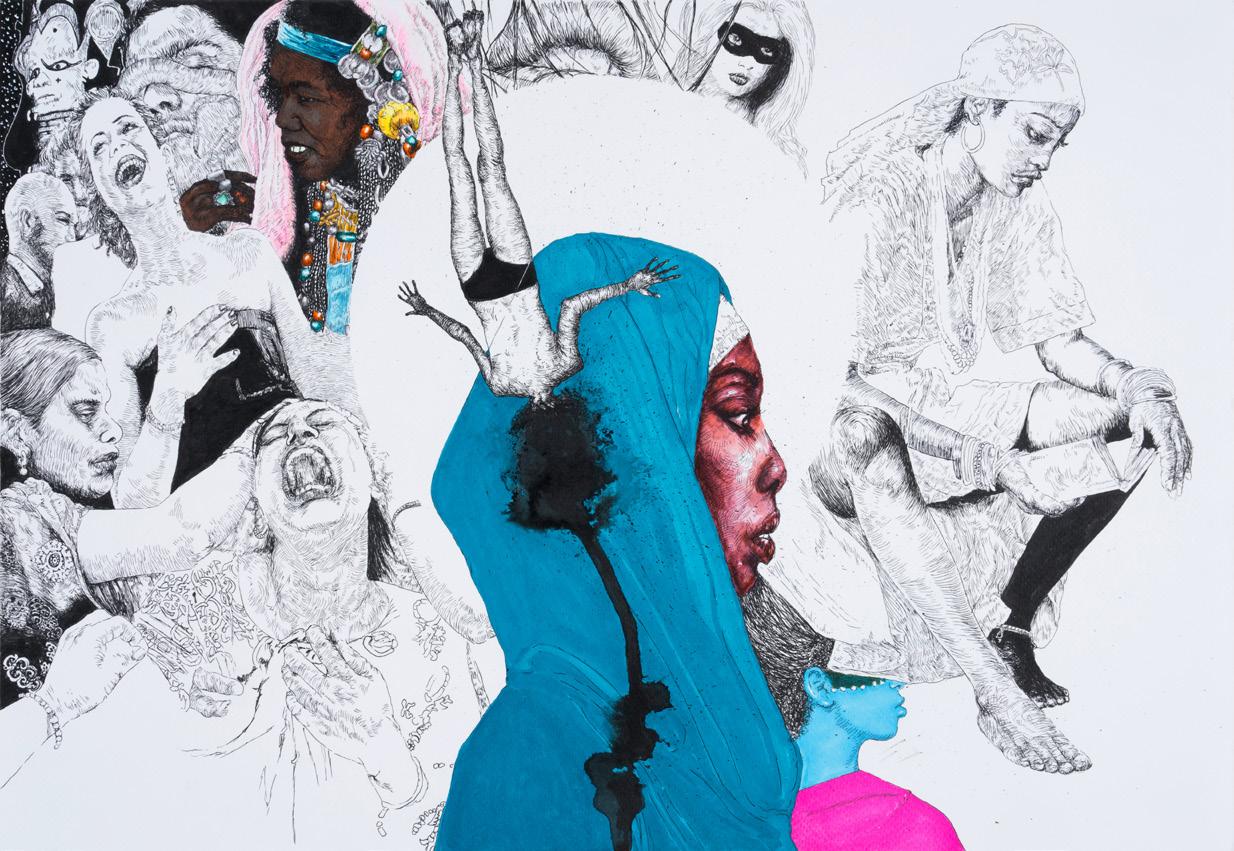
Pages 16–19
Untitled (Back) [detail] 2019


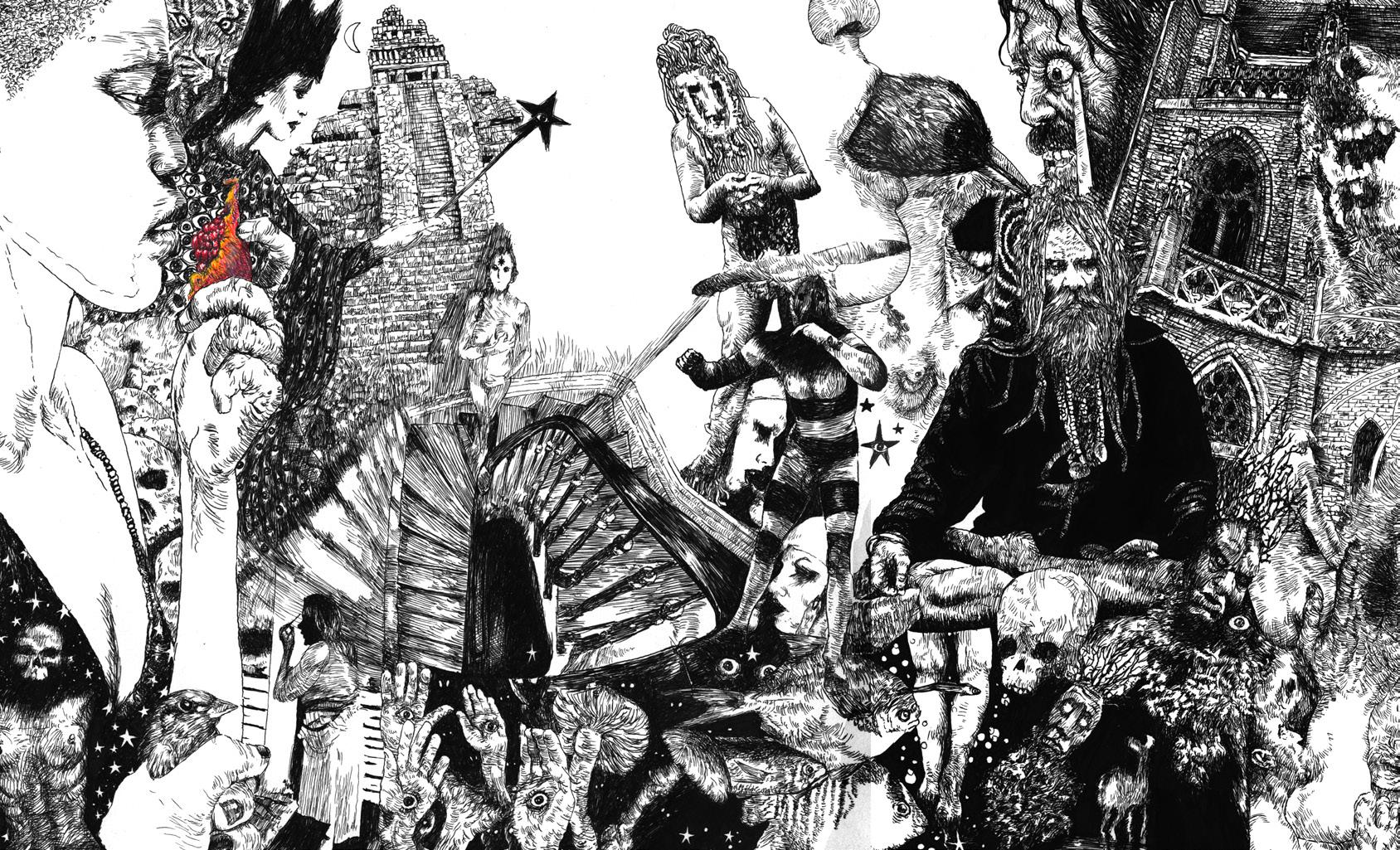
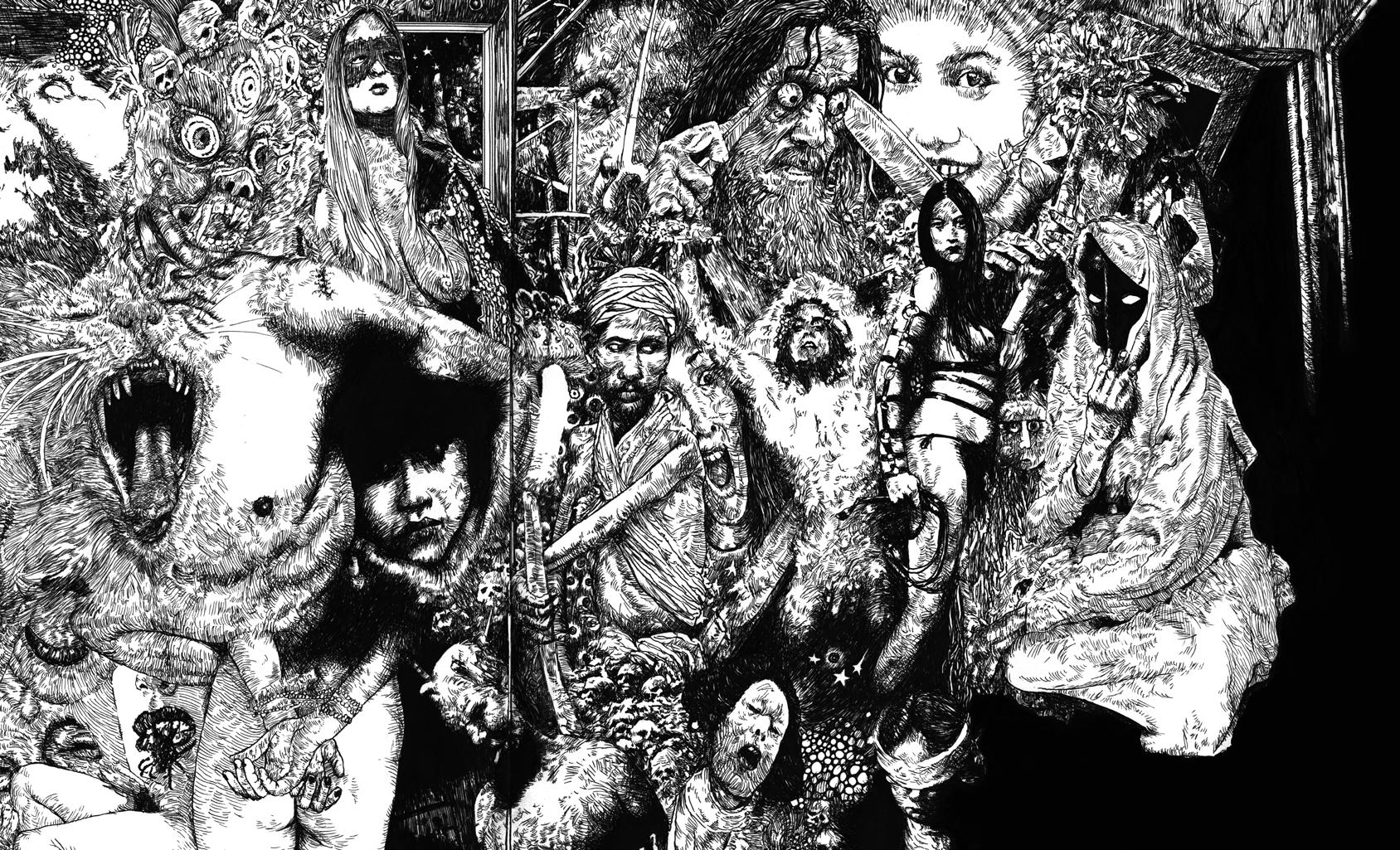


Pages 22–25
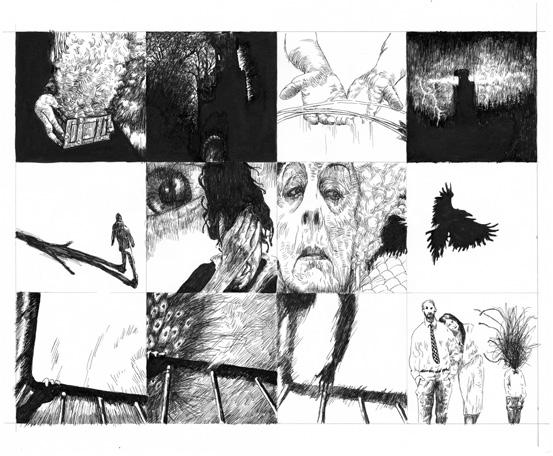
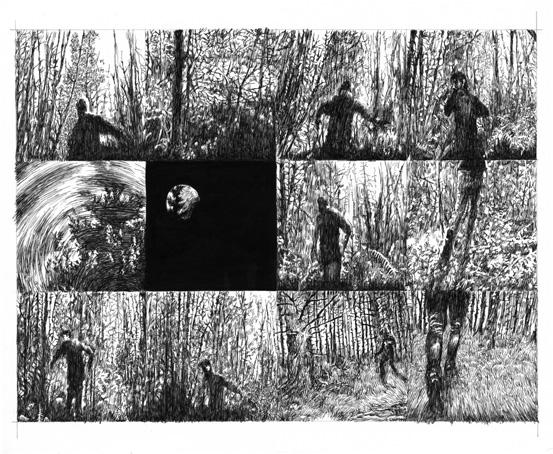
Pages from Sequences 2017
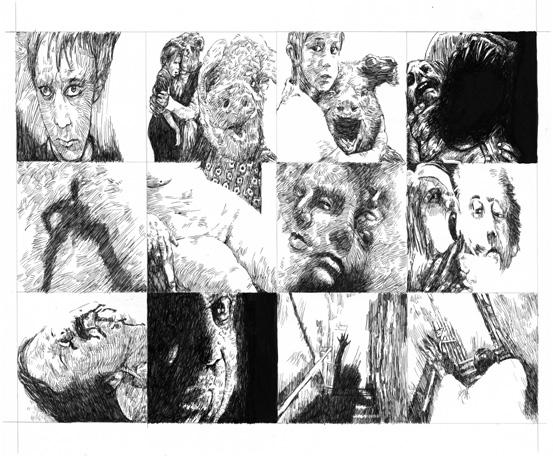
Ink on paper
142.24 x 129.54 cm, set of 9 pages


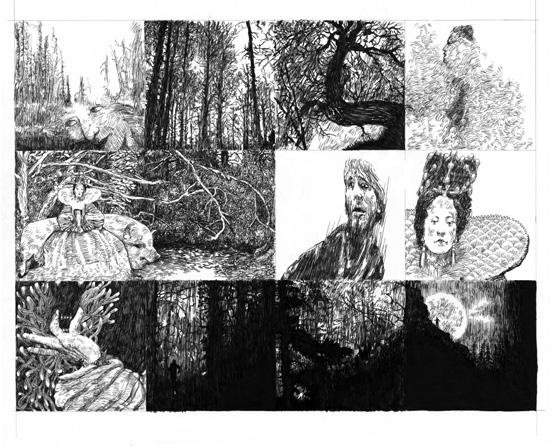
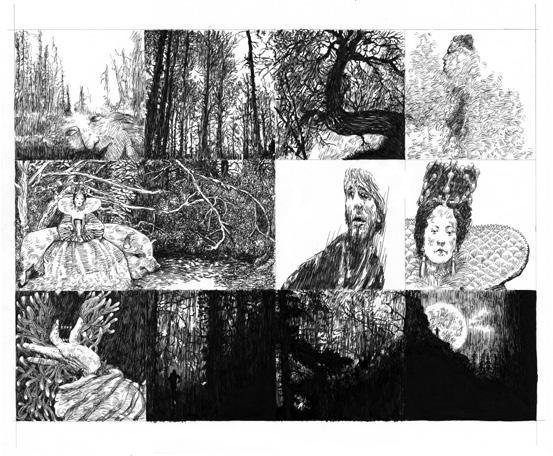

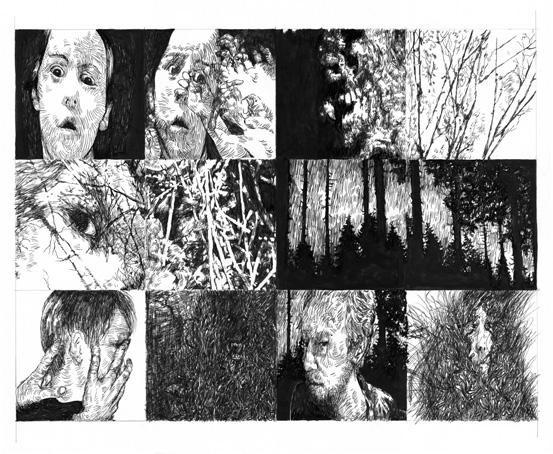
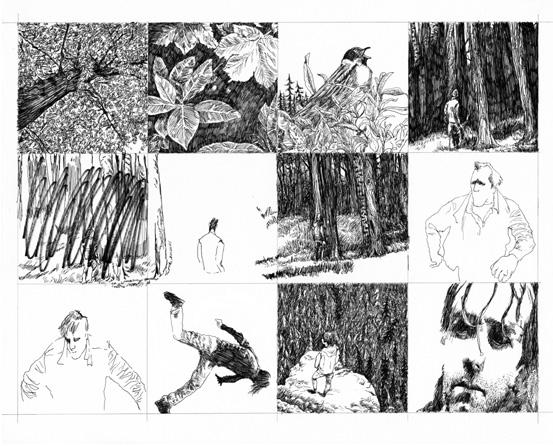

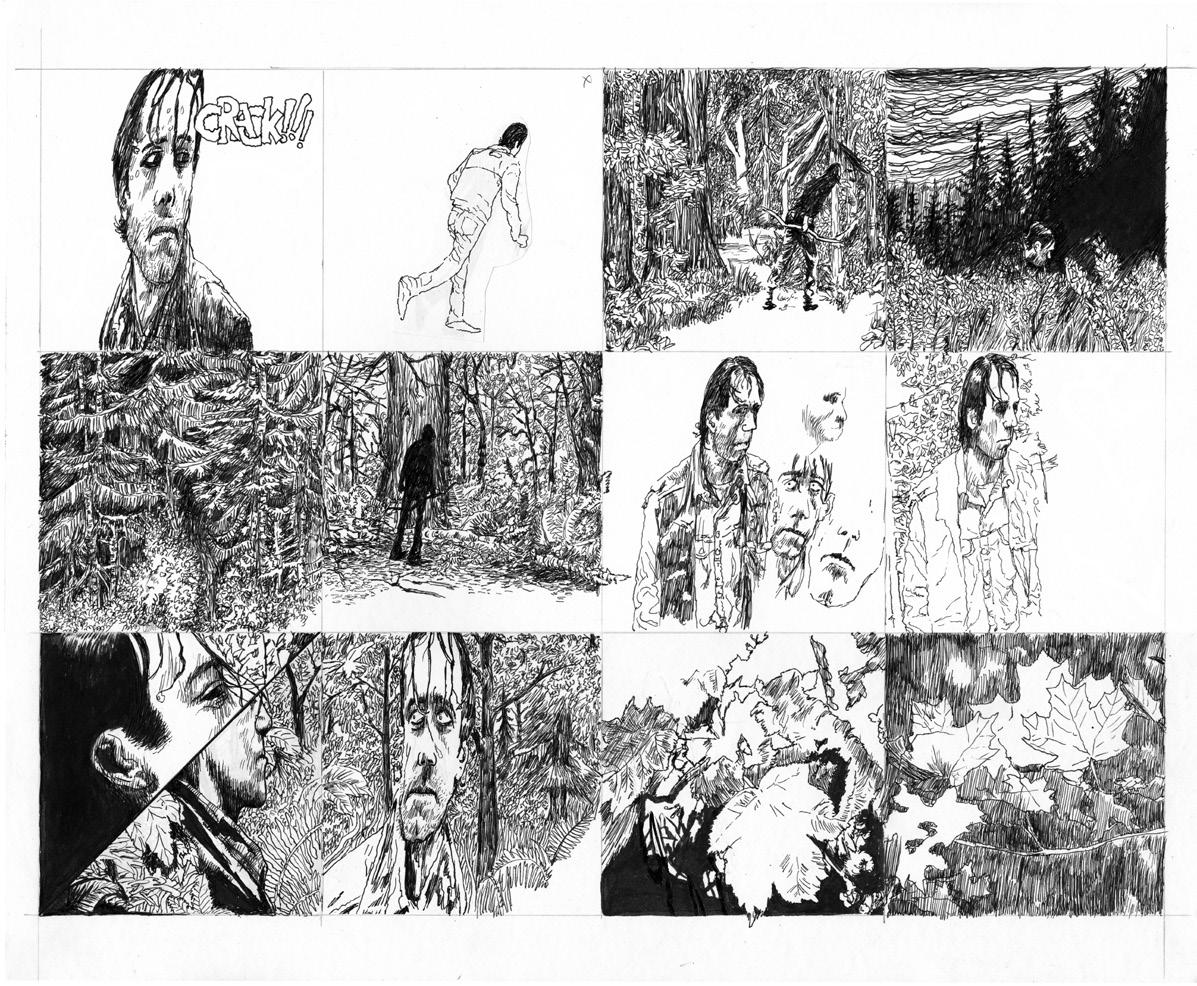
Agalma 2015
China ink on Bristol velum
35.56 x 172.72 cm



Sequences II [detail] 2017
Sequences II [detail] 2017
Pen and ink on Bristol
35.6 x 215.9 cm




Nomo [detail] 2014
Pen and ink on Bristol
35.56 x 43.2 cm
Opposite page
Nomo [detail] 2019
Pen and ink on Bristol
35.56 x 64.77cm





Pages 36–39
Untitled (Front) [detail] 2019
Pen and ink on Strathmore paper
30.5 x 213.4 cm


Maybe Tomorrow 2019
Ink and markers on Strathmore paper
40.6 x 50.8 cm
Opposite page
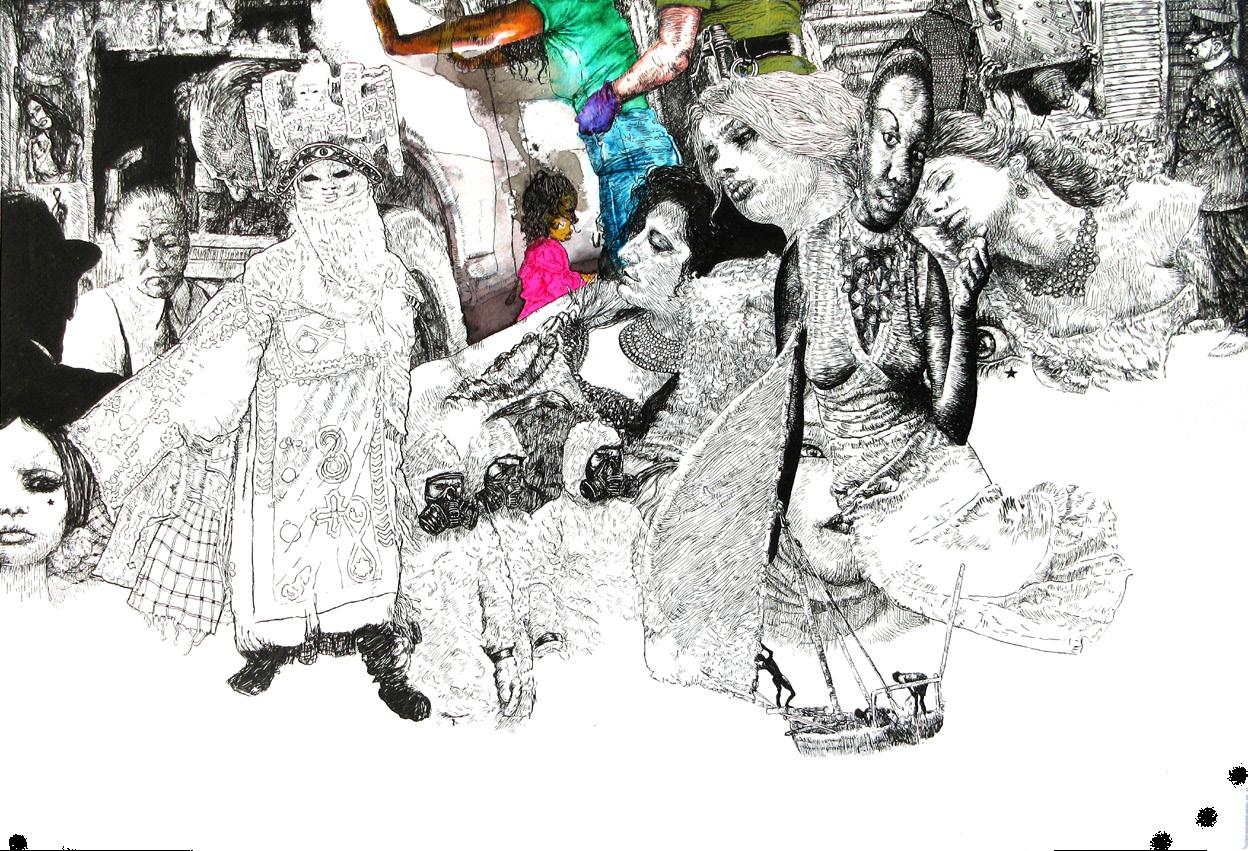
Little Miss Strange 2019
Ink and markers on Strathmore paper
40.6 x 50.8 cm

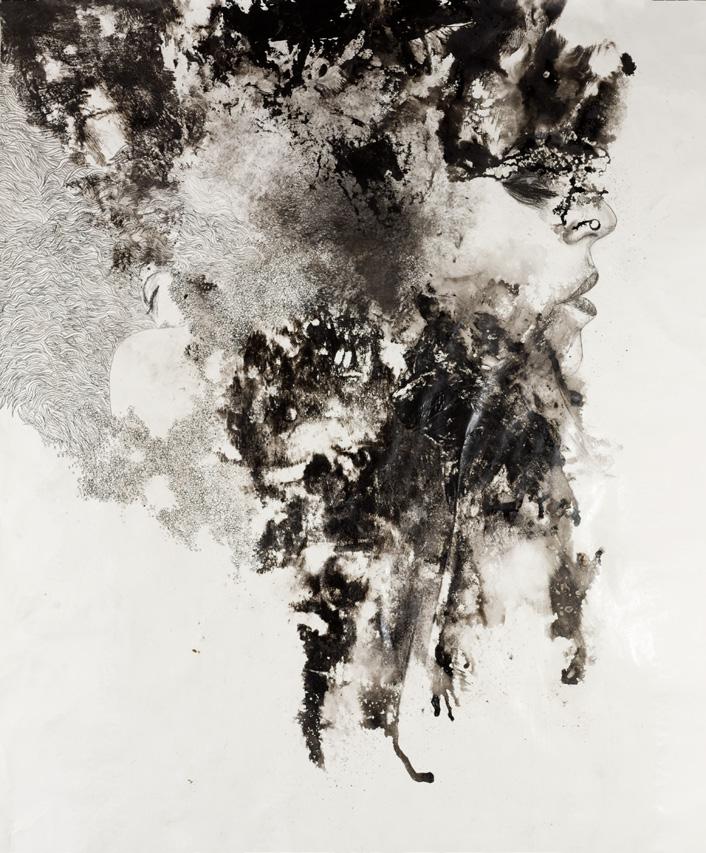
NinaTrek 2019
Ink and graphite on paper
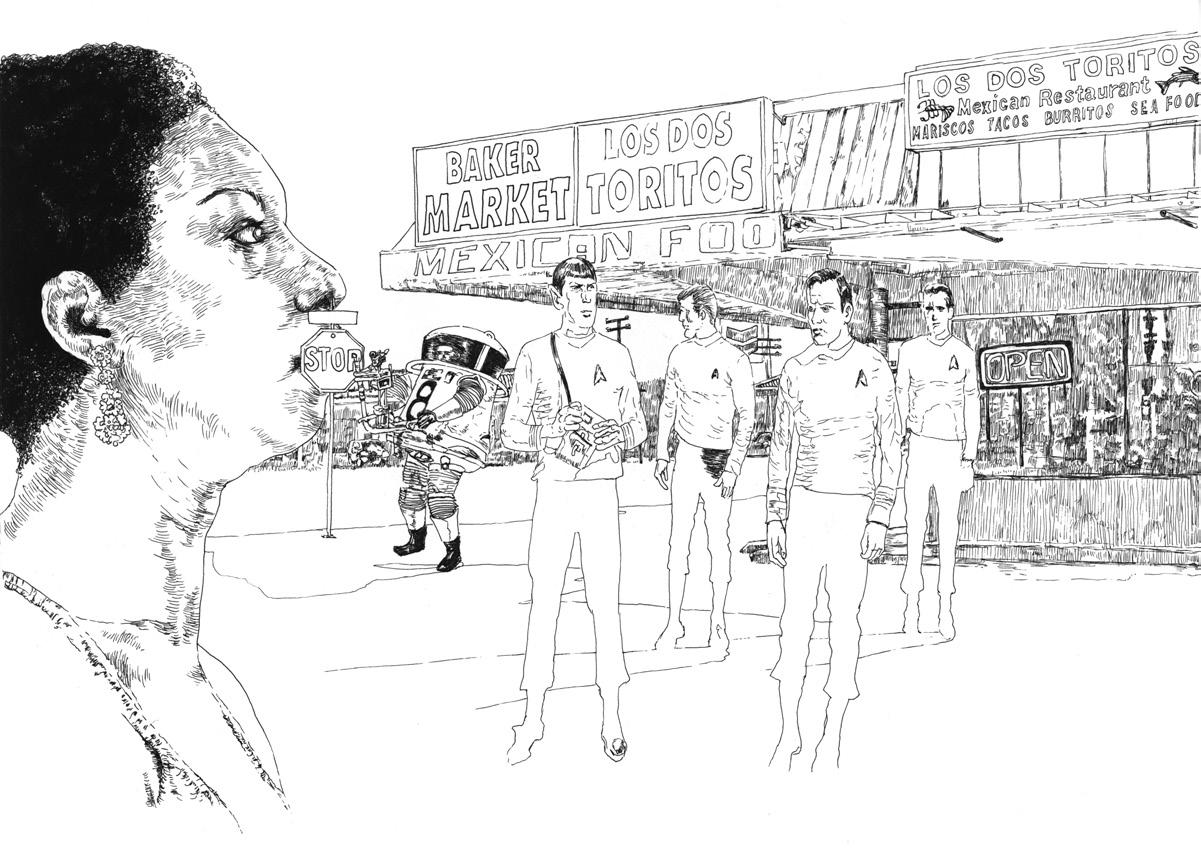
29.72 x 41.91 cm
Opposite page left
Ancestry 2019
China ink, acrylic medium and Liquitex flexible modeling paste on Strathmore mixed media 500 series paper
106.7 x 149.9 cm
Opposite page right
Towards abstraction 2019
China ink, acrylic medium and Liquitex flexible modeling paste on Strathmore mixed media 500 series paper
106.7 x 149.9 cm
Pages 44–47
Pages from Sequences 2017

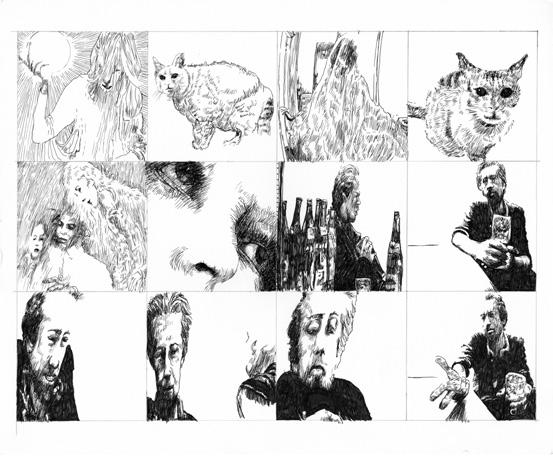
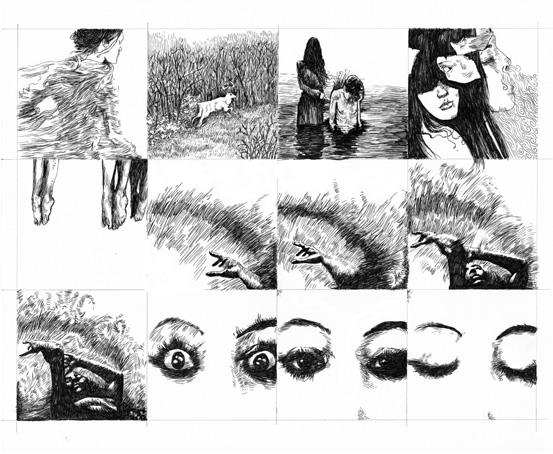
Ink on paper
142.24 x 129.54 cm, set of 9 pages

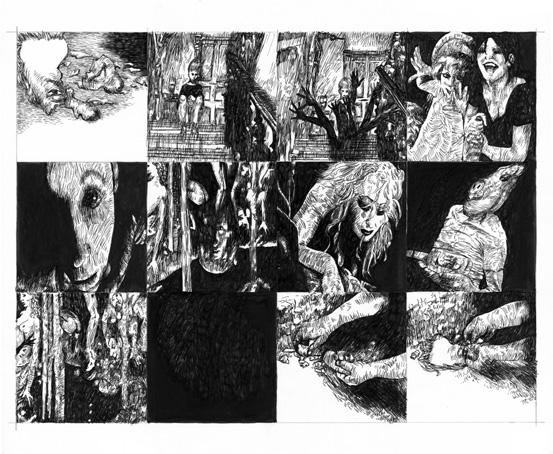



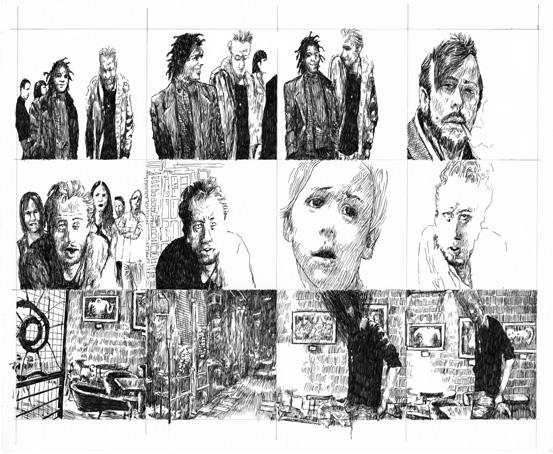
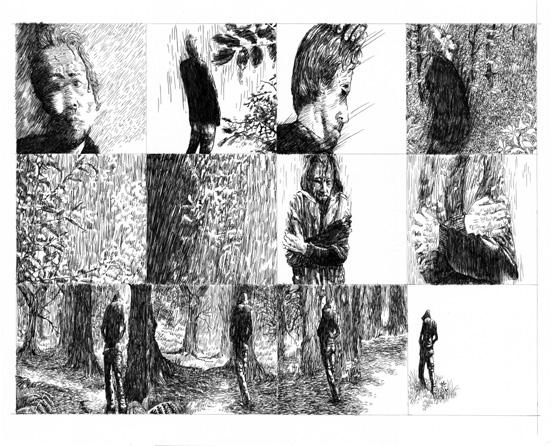


Untitled (The Refugee) 2019
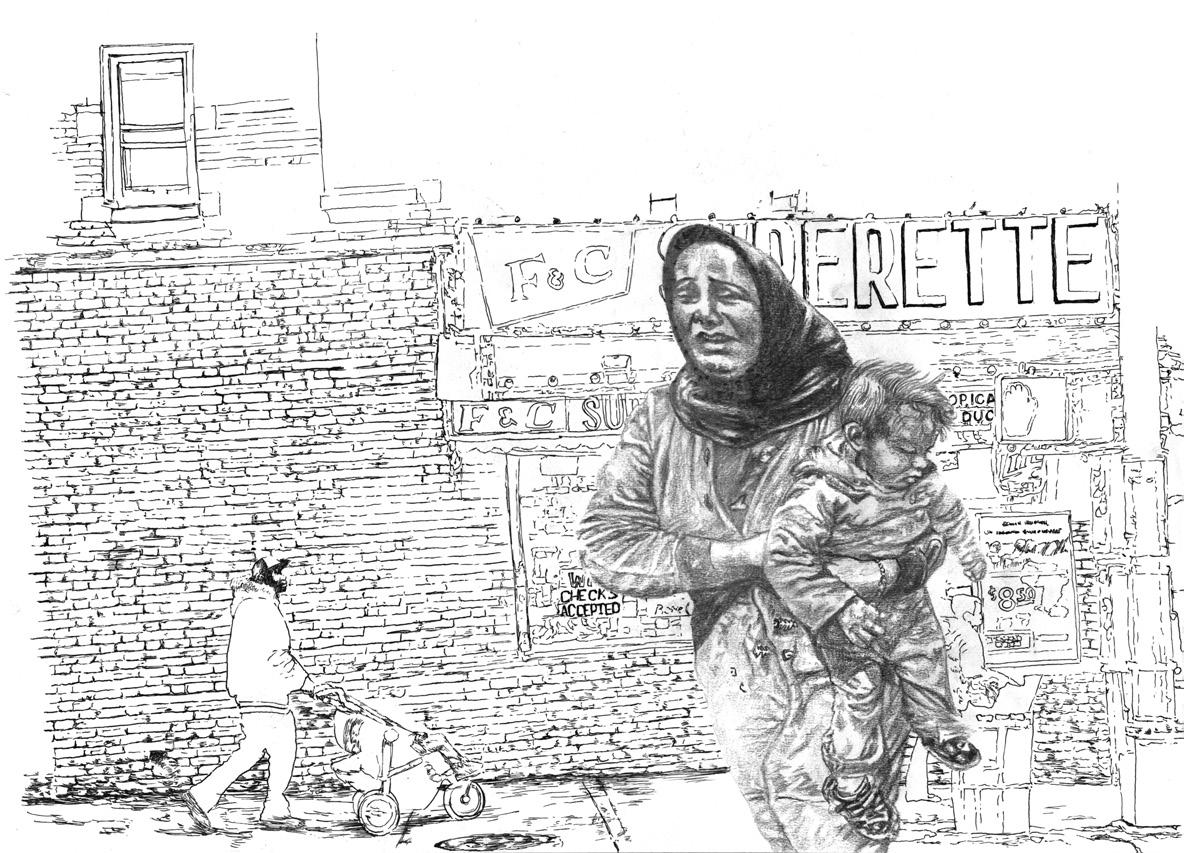
Ink and markers on Strathmore paper
40.6 x 50.8 cm
Opposite page left
Sing For Sunshine 2019
China ink, acrylic medium and Liquitex flexible modeling paste on Strathmore mixed media 500 series paper
106.7 x 149.9 cm
Opposite page right
Somewhere in The Dreams 2019
China ink, acrylic medium and Liquitex flexible modeling paste on Strathmore mixed media 500 series paper
106.7 x 149.9 cm
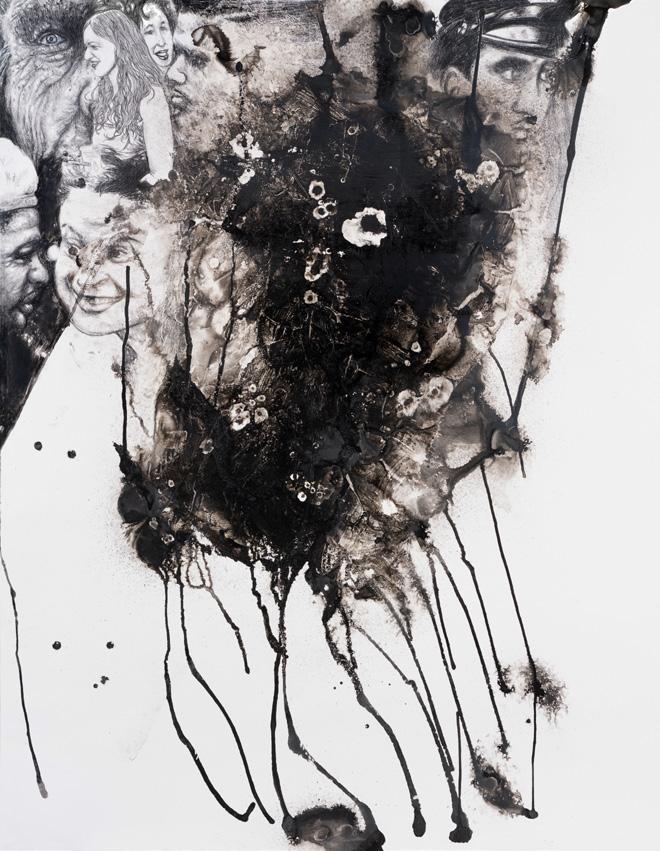

Perc Tucker Regional Gallery
Jonathan McBurnie Creative Director
Erwin Cruz Senior Collections and Exhibition Officer
Sarah Reddington Senior Education and Programs Officer
Lucy Belle Tesoriero Curatorial Assistant
Jo Lankester Collections Management Officer
Emily Donaldson Exhibitions Officer
Leonardo Valero Exhibitions Officer
Tanya Tanner Public Art Officer
Jake Pullyn Exhibitions Officer
Tegan Jackson Arts Administration Officer
Rachel Cunningham Gallery Assistant
Wendy Bainbridge Gallery Assistant
Michael Favot Gallery Assistant
Chloe Lindo Gallery Assistant
Samuel Smith Gallery Assistant
Veerle Janssens Gallery Assistant
Amy Licciardello Business Support Officer


